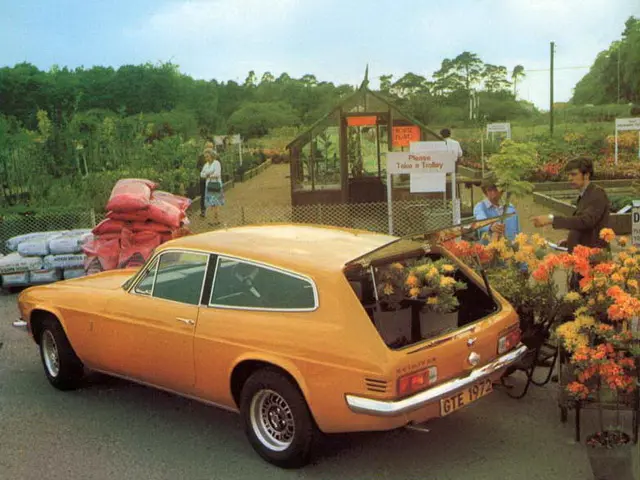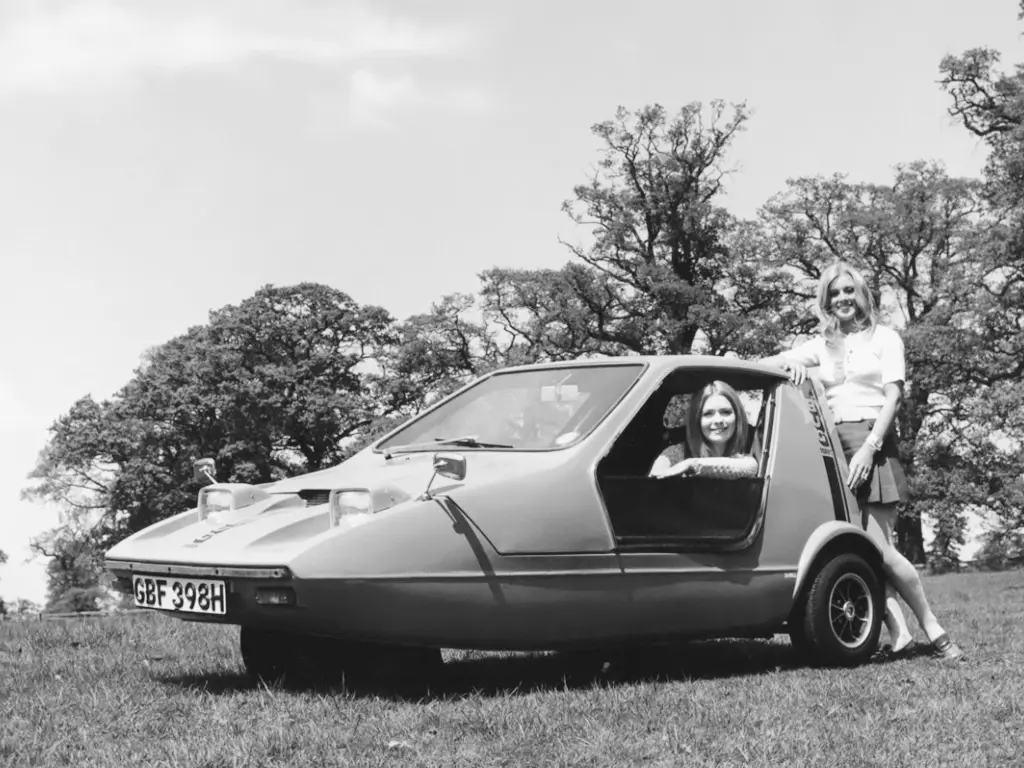TOM KAREN OBE 20 MARCH 1926 – 31 DECEMBER 2022
04 January 2023
On the 2 January, Practical Classics issued the sad announcement that Tom Karen OBE died on the 31 December 2022 at the age of 96. It is almost impossible to describe the impact of his designs on British culture, from the Bush TR130 radio to the Raleigh Chopper – and the Reliant Scimitar GTE and Bond Bug.
Thomas Josef Derrick Paul Kohn was born in Vienna on the 20th of March 1926 and raised in the former Czechoslovakia. In 1942 he came to the UK and studied aeronautical engineering at Loughborough College. On taking British nationality in 1948, he adopted the name ‘Karen’. Six years later, his ‘Vimp’, a Villiers engine aluminium-bodied three-wheeler, received national attention in The Sketch – “Next year – Earl’s Court?”.

By 1955 Karen decided to retrain as an industrial designer and enrolled at the Central School of Arts and Crafts, where Terence Beckett, the then head of Ford GB’s product planning, offered him a job. In his memoir Toymaker, Karen wryly noted his contribution to the Anglia 105E was the front badgework. He subsequently joined Ogle Design, becoming its Managing Director in 1962. The company devised a one-off PR model for Triplex at the London Motor Show three years later, and the ‘Scimitar GTS’ (‘Glazing Test Special’) inspired Karen’s first major automotive project.
The GTS was undoubtedly a handsome machine, and its potential did not go unnoticed at Reliant’s head office in Tamworth. One problem with the standard GT coupe was the restricted accommodation which limited its sales. So, in 1967, the firm’s MD Ray Wiggin asked Ogle to create a ‘semi-estate’ on the lines of the glass company’s show car, one powered by Ford’s 3-litre ‘Essex’ V6 engine. The Scimitar wagon needed to be stylish and practical, and Karen decided the body should have a rising waistline because “In existing cars, this line was always flat, with perhaps a slight droop at the back. In my vision, the waistline would be rising, from front to back - and immediately it would feel like a sports car. I’ve always had a thing about power being generated from the rear”.
The designer was also unkeen on fastback bodywork, stating, “there’s nothing good to be said for them except that some people think they look alright”. In his view, “Aerodynamically they’re lousy, headroom in the back is lousy, for visibility they’re lousy, with a lot of glass they’re lousy, from a weight point of view, and they give no boot access”.
Reliant announced the GTE to the press in August 1968, and two months later, it starred at Earls Court. At £1,759 was a considerable sum of money, making the new Scimitar more expensive than a Rover 2000TC, but there was no other sporting four-seater to rival it. Despite weighing more than the GT, the top speed was a respectable 117 mph, and Motor pointed out, “nothing at all has been sacrificed for versatility”.
Meanwhile, Car may have complained, “We are not unstinting in our feelings about the styling”, but this did not prevent the Guild of Motoring Writers from naming the GTE as “Britain’s Most Beautiful Body” in 1970. That year, Princess Anne received a Scimitar as a joint birthday and Christmas present from the Queen and the Duke of Edinburgh, thereby gaining Reliant several million pounds of free publicity.
1970 was also the year that Karen’s desire to make a “sporty two-seater three-wheeler that applied top-of-the-range design values to a minimalist vehicle” became a reality. Seven years earlier, he offered such an idea to Reliant, who were initially unkeen; their Regal 3/25 appealed to a traditional-minded customer base. However, six years later, the Tamworth concern took over Bond of Preston and needed a fresh model utterly different from the Hillman Imp-powered 875.
Karen’s prototype used the Regal’s 701cc light-alloy engine and featured a truly eye-catching GRP body. The designer thought the colour choice should be limited to tangerine while “Reliant approved what we had done but sensibly asked for some boot space and widening of the front end. They also hit on the inspired name ‘Bug’”. June 1970 saw the launch at Woburn Abbey and Karen recalled: “several hacks got carried away by the fun atmosphere”, with one writer managing to overturn a Bug.

The range consisted of the incredibly Spartan 700 with a fixed canopy and no side screens, the 700E with a heater and an opening roof and, best of all, the 700 ES, which gave the owner a high-compression engine, twin horns, wing mirrors and a ‘racing steering wheel’ for their £628 19s. This sum included road tax and two years’ insurance to attract younger motorists further. Bond claimed, “Draw up outside any pub or club you can think of; there won’t be another car in the car park with a bigger crowd around it”.
Other uber-1970s forms of promotion included a Bond as the star prize in the ITV quiz show The Golden Shot (the host Bob Monkhouse also drove one off-screen) and Fine Fare’s ‘How Many Bottles of Cider Can You Fit in A Bug’ competition. In the summer, a six-strong fleet of white Rothman PR vehicles toured seaside resorts and gave Green Shield Stamps to fortunate holidaymakers.
The 750ES of 1973 featured the 748cc engine of the new Reliant Robin, but the Bug proved expensive to build, and the insurance premiums were now too costly for its intended buyers. The further problem was, as Karen later observed, “I don’t think dealers really appreciated what they were selling”. The last of 2,270 examples left the factory in May 1974, marking the end of Bond. However, this was not quite the end of the story, as Ogle Design was commissioned to make Luke Skywalker’s ‘Landspeeder X-34’. The result employed a Bug chassis with angled mirrors to give the illusion it was floating above the desert.
Tom Karen wrote in Toymaker, “To me, everything is about form. Each line, inside and out, needs a purpose; and all the different lines must harmonise”. And this equally applies to the Bug and the Scimitar GTE – two vehicles by this incredible designer, which truly merit the overused term ‘iconic’.
